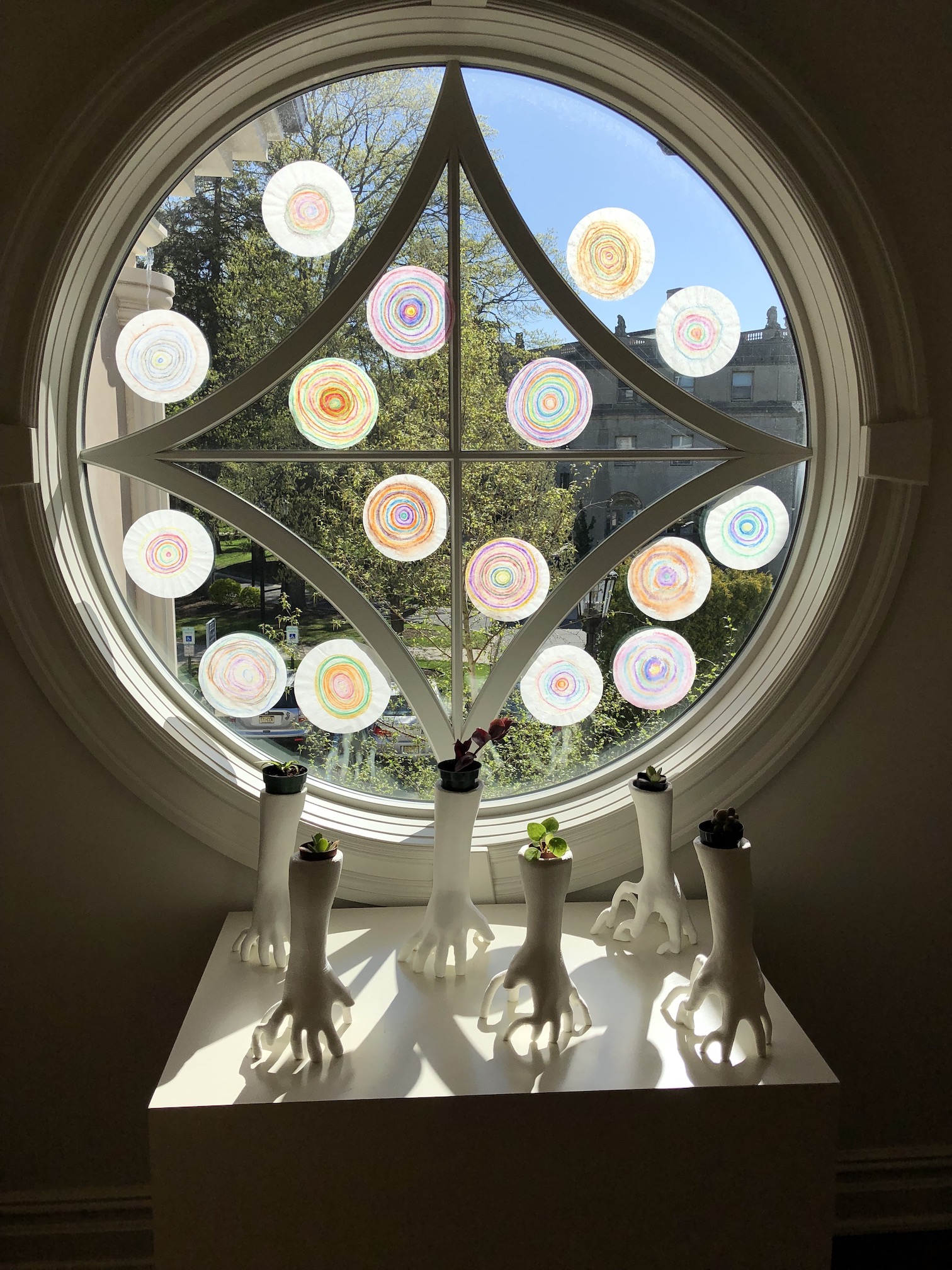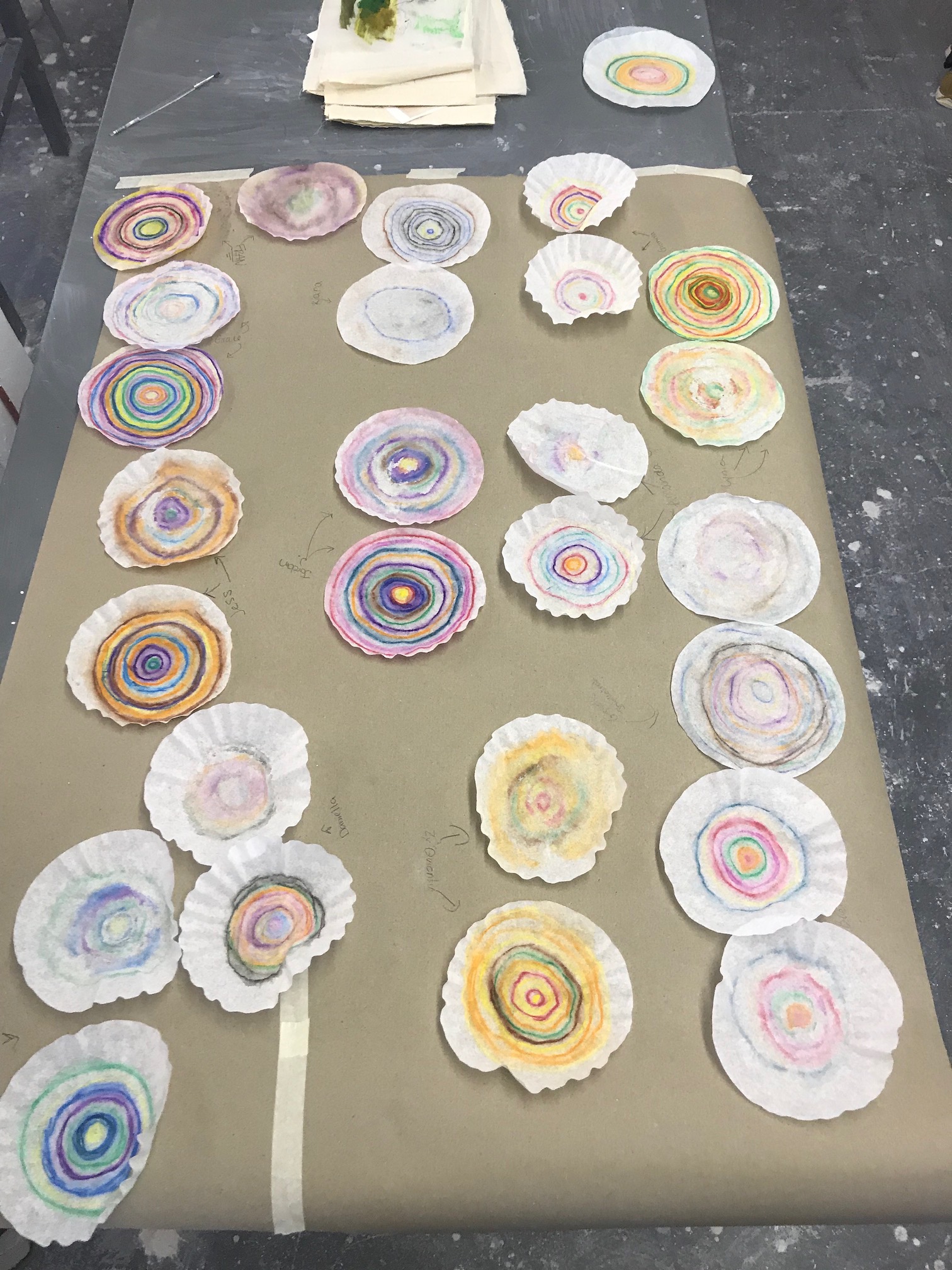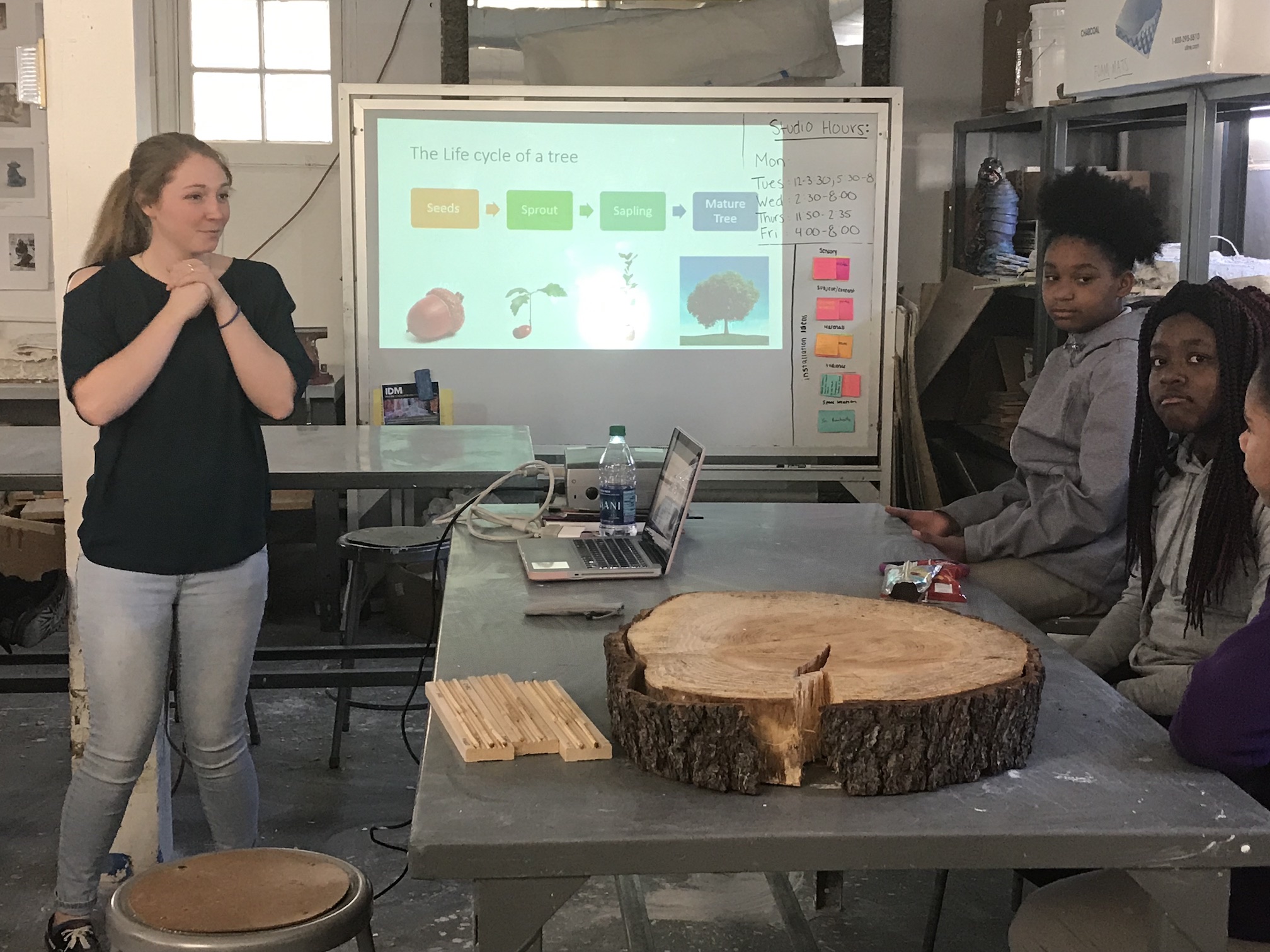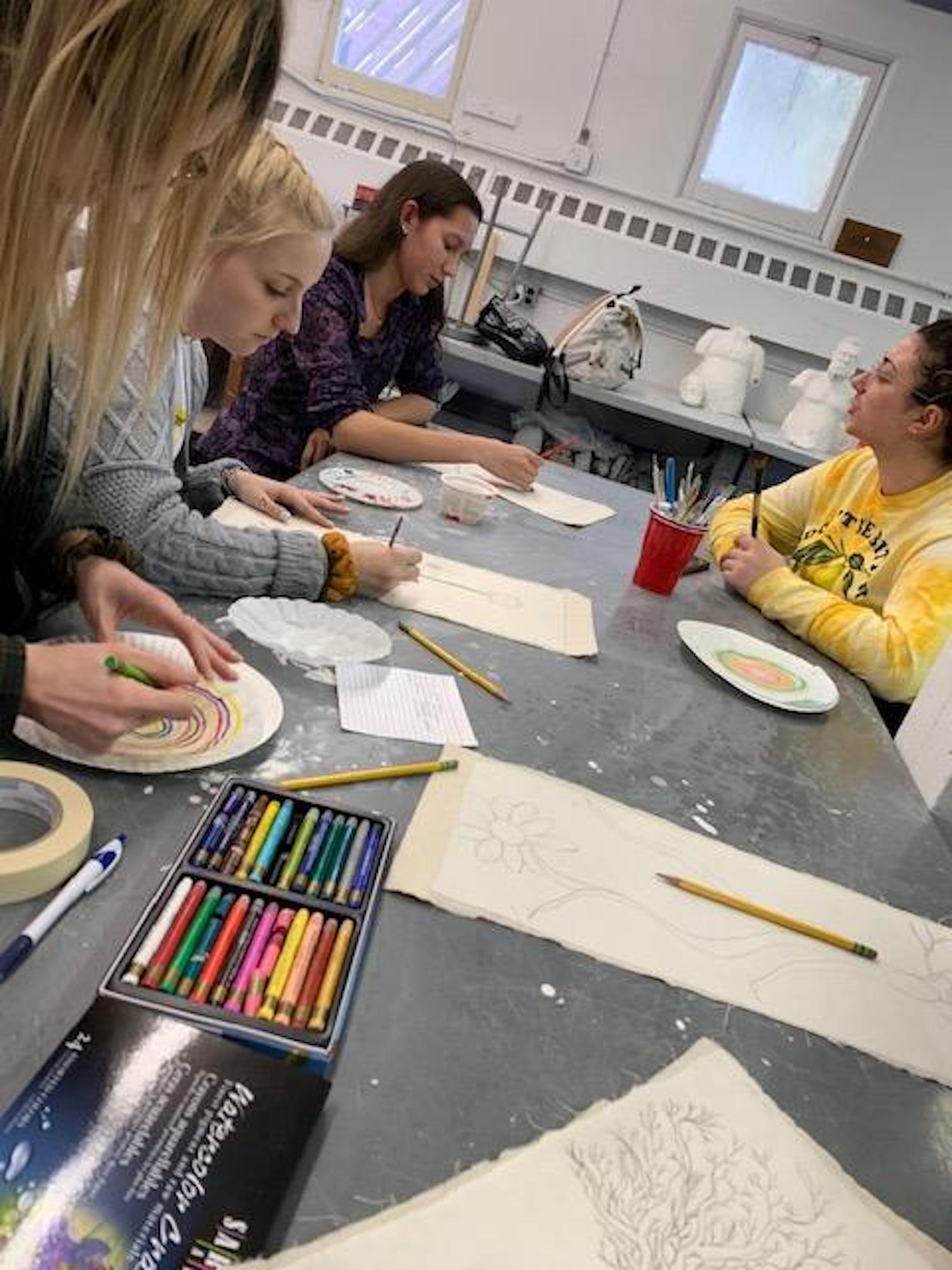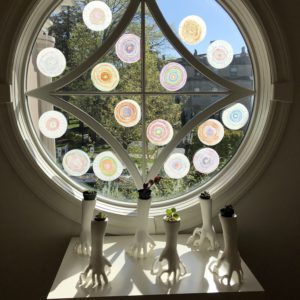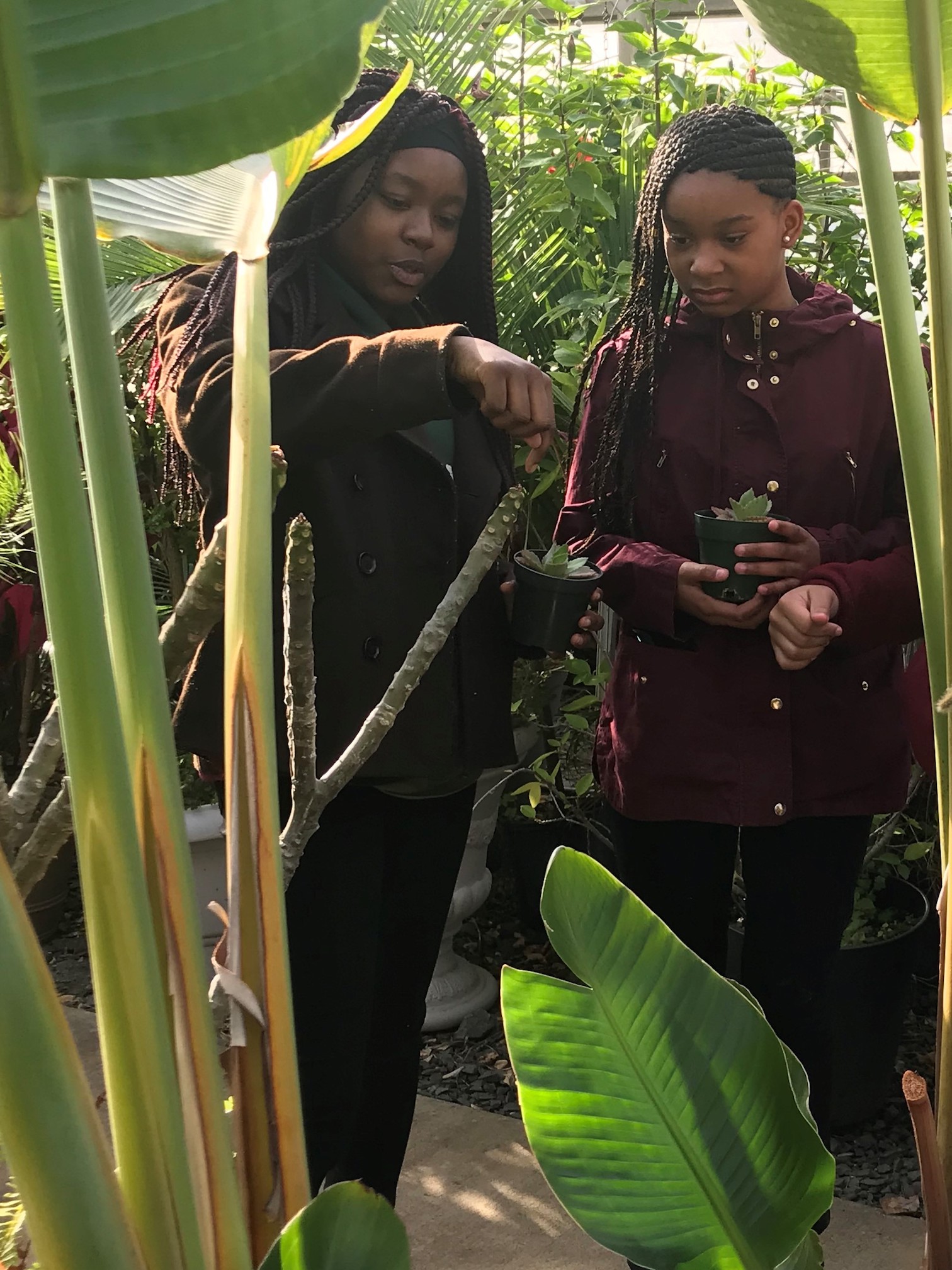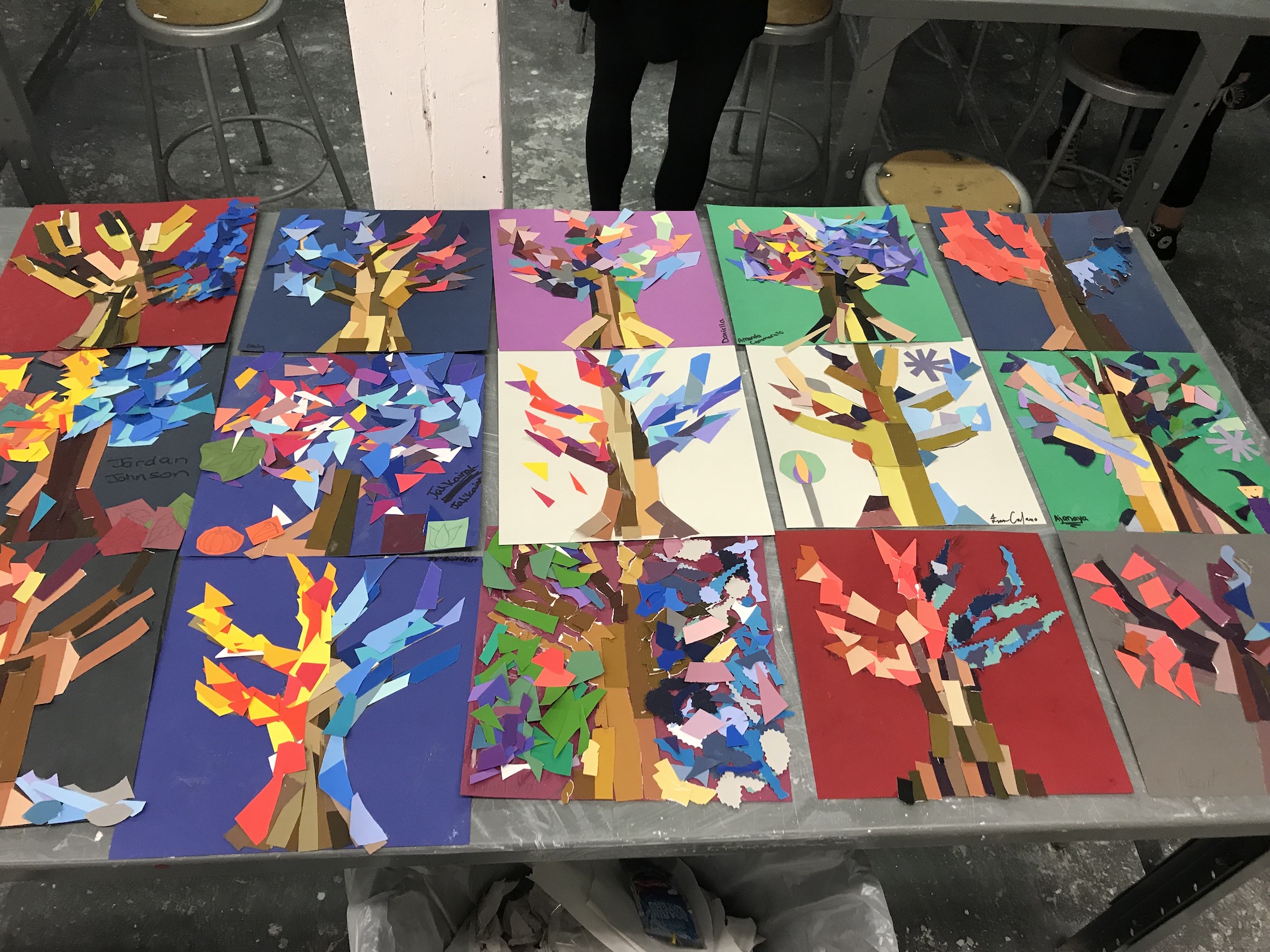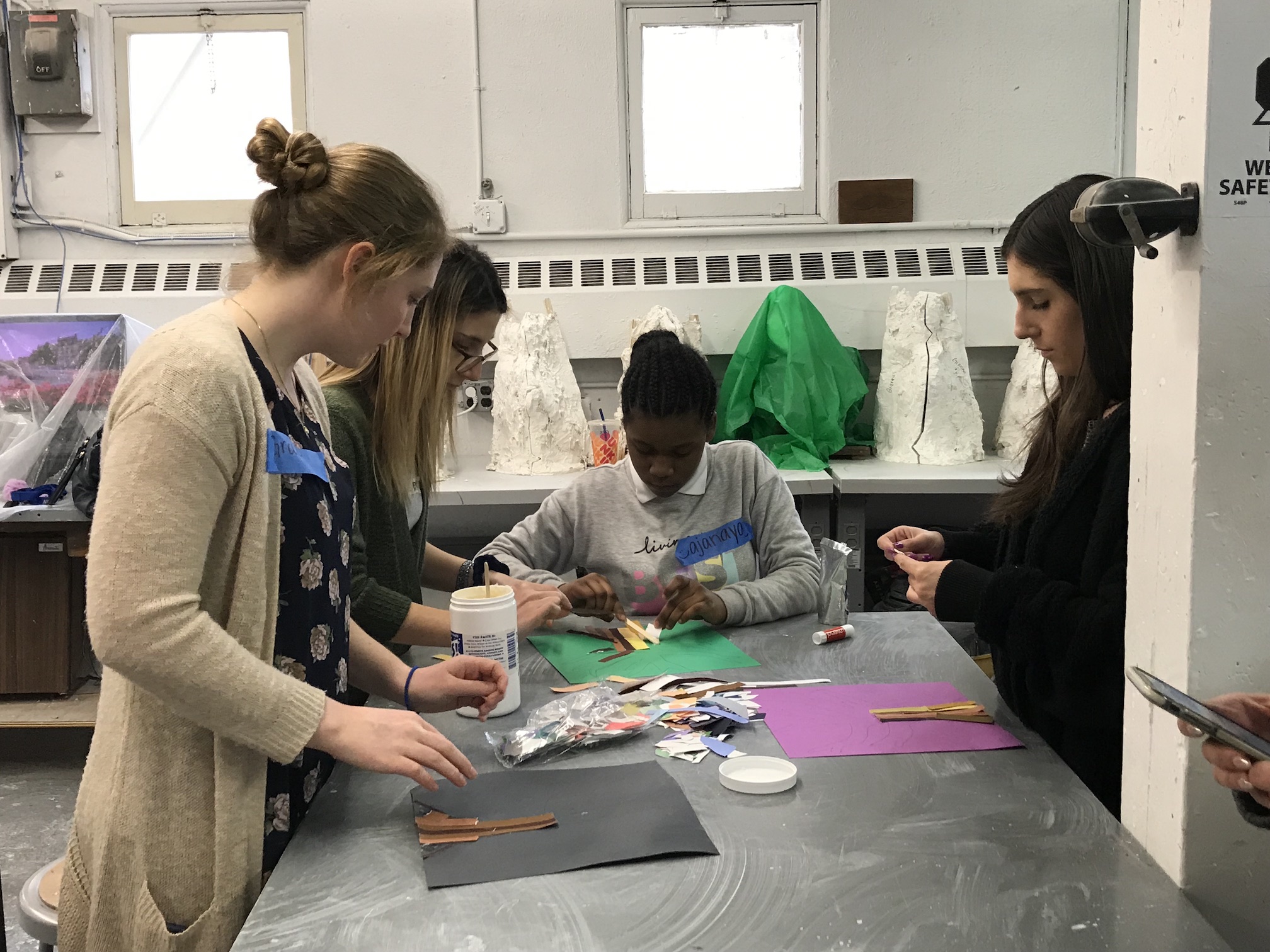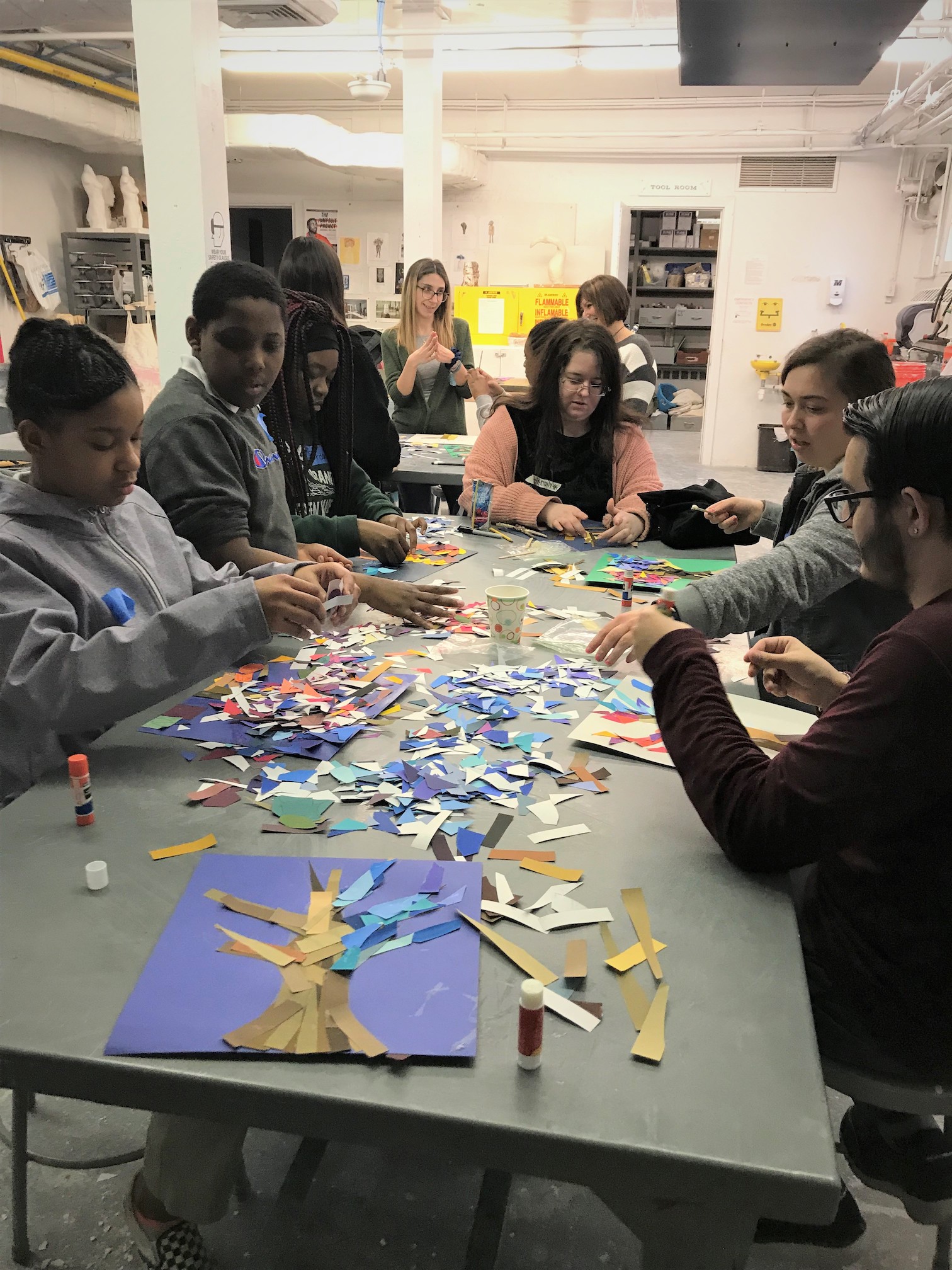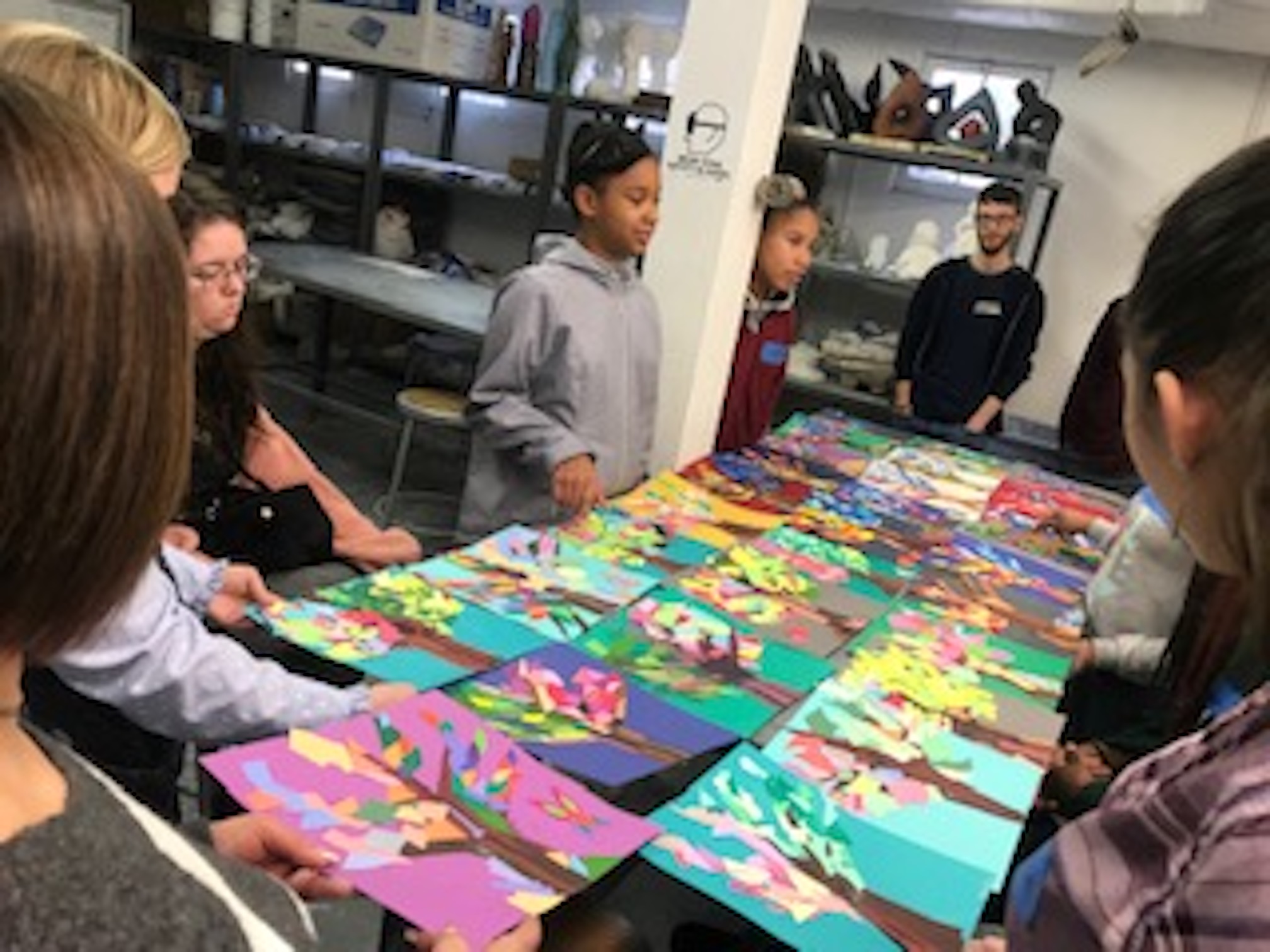The science students taught us about the life cycle of a tree, as well as dendrochronology, the study of tree rings. Each year a mature tree develops another tree ring, so when a tree is chopped down, we can count approximately how many years it has been alive.
We then learned about the symbolism of different colors in art, and how those colors are used in art throughout the ages. For example, in some paintings and artwork yellow symbolizes happiness, so we looked at Sunflowers by Vincent Van Gogh, or pink represents femininity, as in Dancers in Pink by Degas, as well as other pieces. We then brought these two concepts together in order to create our own colorful tree rings. Each tree ring is assigned to an important person in the student’s life, from childhood to the present. Assigning a color based on its symbolic meaning to each person, each tree ring is unique to each individual.
For a full gallery of images and artwork from the entire 2019 D-Eco-Self Trees, click here.

